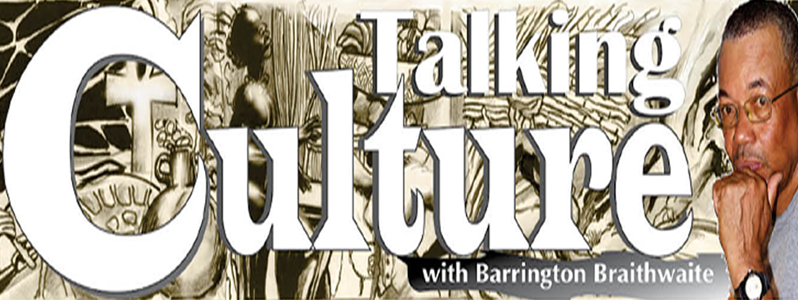An Emancipation Oath on the Ancestors
SOME months ago, Trinidadian Ramdath Jagdessar vomited an odious narrative of hate, directed at Afro-descendants in Guyana and Trinidad, stating that “Africans did not build Guyana and Trinidad“ he also included Suriname in his diatribe.
What he said is intended to influence all and sundry that are oblivious to paying attention to the important matters concerning the anatomy of history, culture, politics and their related impact on economics, self-esteem and the awareness necessary for the productive confidence; which if you cannot define yourself, others will define you according to where you fit as fodder in their scheme of things.
To begin, contradicting Ramdath, African tribes in the age of the Atlantic Slave Trade were organised from adolescence into specific orders that left no member outside of a contributory position. From the inception, the initiation into young adulthood of both male and female led to the awareness of responsibility and tribal laws, then into categories and guilds that covered agriculture and animal husbandry, ironworks, sculpting, construction, canoe building and navigating rivers, military and hunting training, among other necessary skills. There were no menial contemptible tasks as can be identified in Asian caste system cultures, in the African tribal menu of responsibilities. Thus, the Africans who were sold into slavery were in the majority prisoners of war, and tribes subdued by invasion by other tribes and slavers.
The enslaved African people who were brought into the slave trade were not as defined by Jagdessar as untalented people brought to do menial work; he is attempting to transfer his own caste memory onto the African experience. ‘The production of the Sugar Cane crystal was brought into Iberian Europe by the Moors in the late 9th or 10th century. Thus it was Spain and Portugal who pioneered Sugar production in the early stages of the Atlantic slave trade colonising era.’ –Seeds of Change Smithsonian Institution Press 1991. Islamic Nations and influence was a feature of West Africa so were trade, it is obvious that West Africans who were enslaved were exposed to sugar development and were as such assets. Plantation owning Europeans also demanded from their slavers to request from the slave-trading African kingdoms –captured Africans who knew how to plant ‘rice’. Also necessary were slaves with the skill to reproduce the ancient methodology mastered by Africans of producing granaries. Thus, to quote from the narrative of one of the earlier biographer of Stabroek and other areas of colonial Guyana this other factor that some enslaved became emancipated, meaning that they purchased their freedom, “The seasoned negroes keep fowls, pigs, goats, and grow garden stuff; the tradesmen employ their spare time in making those articles of their several trades which they can sell to advantage. At the close of life they often keep a retail shop. It is by no means an uncommon thing in theses colonies for negroes when they have accumulated a sufficiency, to purchase their freedom.” A VOYAGE TO THE DEMERARY by Henry Bolingbroke 1799-1806.
The stock imagery of slavery does not reflect the timeline and gradations of the humanity enveloped in that era, as existing historical stock templates go, they are designed for quick usage, and not a complex structure of social puzzles and contradictions, that challenge the mind to explore and unmask across human borders. Thus, it should be instructive to the Ramdath Jagdessar’s of our Americas, who require a justification of imagining superiority of self-assurance to emerge from social obscurity, that it is necessary to contradict and arrange an opposing narrative that can stand in posterity with guiding references to subdue the ugly inferiority complexes that haunt and propel such minds. Such an education cannot be contained in any single article.
But let us presume that extracts rooted in fact, about the kind of origins of the Caribbean human world, in this case, with special reference to the Afro-Guyanese, Trinidadians, Surinamese and others came from, will aid in healing through the curiosity to explore a true human world of what was and what came to be, here I will use the text of a non-African whose literary legacy, ‘A’ Jagdessar would be more anxious to accept, who visited pre-colonial Africa. “In 1906 when I penetrated into the territory of Kassai-Sankuru (states Frobenius), I found still, villages of which the principal streets where bordered on each side for leagues, with rows of palm trees, and houses decorated each one in charming fashion, were works of art as well…Everywhere were velvet and silken stuffs. Each cup, each pipe, each spoon was an object of art perfectly worthy to be compared to the Roman European style. But all this was only the particularly tender iridescent bloom which adorns a ripe and marvellous fruit; the gestures, the manners, the moral code of the entire people,… were imprinted with dignity and grace,…I know of no northern people who can be compared with these primitives with unity of civilization. Alas these last Happy Isles! They, also, were submerged by the tidal wave of European civilization. And the peaceful beauty was carried away by the floods (Professor Leo Frobenius in Historie de la Africaine. Cited by Dr. W.E.B. DuBois in The World and Africa, pp. 156-7)” Introduction to African Civilizations by John. G. Jackson.
The building and shaping of Guyana, Trinidad, Suriname, Jamaica, the New World was carried by the “ATLAS of Africa” Haiti, the most victimised of the Caribbean family is so because of the hate and fear of the slaving nations. Should Ramdath Jagdessar introduce himself as Trinidadian anywhere in the world, the first three things any foreigner will link themselves to his country with; is Carnival (that Ancient festival to the Gods of Khemet) next will be Calypso, (daughter of the African titan Atlas, fabled king of Atlantis and the Steel Pan, that dynamic creation that stands alone, as the only musical instrument created since 1492. So what was the criterion implied about the building of a nation about again?



.jpg)









